


Illuminating Our Path To Sustainability

Solar energy, often hailed as the future of sustainable power, is increasingly taking center stage as we grapple with environmental concerns, climate change, and the need for clean, renewable energy sources. In this article, we will explore the significance of solar energy in shaping the future and the numerous ways it will contribute to a more sustainable and brighter world.
The Promise Of Solar Energy
Solar energy holds immense promise for the future for several compelling reasons:
Inexhaustible Resource: The sun, our ultimate energy source, is an almost inexhaustible and free resource. It continually emits an enormous amount of energy, more than humanity could ever consume.
Environmental Benefits: Solar power is one of the cleanest and most environmentally friendly energy sources available. It produces no greenhouse gas emissions, air pollution, or water usage, making it a key player in mitigating climate change.
Global Accessibility: Solar energy is accessible virtually everywhere on the planet. As long as there is sunlight, solar panels can be installed and harnessed, making it a democratic energy source.
Technological Advancements: Ongoing advancements in solar technology continue to drive down costs and improve efficiency, making it increasingly attractive and affordable for individuals, businesses, and governments.
The Role Of Solar Energy In The Future
Transition To Renewable Energy: Solar energy will play a pivotal role in the transition from fossil fuels to renewable energy sources. As our understanding of the urgency of addressing climate change grows, solar power will be an integral part of this shift.
Grid Integration: Future energy systems will be smart and interconnected, with solar power integrated into the grid to ensure a reliable and consistent energy supply. Solar energy, combined with energy storage solutions like batteries, will enable us to use solar power during cloudy days and at night.
Electric Transportation: Solar energy can also revolutionize transportation. Solar-powered electric vehicles (EVs) are on the horizon, and solar charging stations are already being deployed, reducing our reliance on fossil fuels and reducing transportation-related emissions.
Decentralized Energy Production: The future of energy will see a shift from centralized power production to decentralized energy generation. Individual homeowners and businesses will become active contributors to the energy grid, producing excess energy for the benefit of the community.
Energy Security: Solar energy offers increased energy security. As nations invest in solar technology, they reduce their dependence on energy imports, increasing resilience to energy disruptions and price fluctuations.
Economic Growth: The solar industry is a substantial source of economic growth and job creation. The development, installation, and maintenance of solar systems offer employment opportunities and stimulate local economies.
Challenges And Considerations
Despite its bright future, solar energy does face certain challenges. These include intermittency (the sun doesn't always shine), energy storage solutions, and the need for a supportive policy framework to encourage adoption and investment. However, ongoing research and development are addressing these issues, and government incentives are promoting solar adoption.
Solar energy holds the key to a sustainable, clean, and renewable future. As technology advances, costs decrease, and environmental concerns intensify, the role of solar power in our daily lives is set to expand. Embracing solar energy is not just an environmental decision but a practical and economic one. As we move forward, solar energy will be the beacon guiding us toward a brighter and more sustainable future.
The Future Of Comfort And Efficiency
 Automation And Control
Automation And Control
A central component of smart living spaces is automation and control. Homeowners can remotely manage and monitor their living spaces using smartphones, tablets, or voice-activated virtual assistants like Amazon's Alexa or Google Assistant. This level of control allows for real-time adjustments and customization, enhancing the overall living experience.
Energy Efficiency
Smart living spaces are designed with a strong focus on energy efficiency. They incorporate advanced heating and cooling systems that can be programmed to operate only when needed, reducing energy waste. Smart thermostats learn user preferences and create schedules that optimize comfort while minimizing energy consumption. Lighting systems can adjust brightness based on natural light levels, further reducing energy usage.
Security And Safety
Security is a paramount concern in smart living spaces. These spaces feature advanced security systems equipped with surveillance cameras, motion sensors, and smart locks. Homeowners can monitor their properties in real-time, receive alerts about unusual activity, and control access remotely. This level of security enhances peace of mind.
Entertainment And Convenience
Entertainment and convenience are also central to smart living spaces. Smart televisions, sound systems, and streaming devices can be controlled with voice commands or through a centralized app, creating an immersive and user-friendly experience. Smart appliances, such as refrigerators, ovens, and washing machines, offer convenience features that make daily tasks more efficient and enjoyable.
Customization And Personalization
One of the key benefits of smart living spaces is customization and personalization. These spaces are designed to adapt to the needs and preferences of their occupants. For example, smart lighting systems can create lighting scenes to match different moods or activities, and smart thermostats can create individualized heating and cooling schedules for each family member.
A Path To Sustainability And Well-Being
 Harmony with nature is not merely an abstract ideal; it is a practical and philosophical approach to life that has profound implications for our environment, mental well-being, and the future of our planet.
Harmony with nature is not merely an abstract ideal; it is a practical and philosophical approach to life that has profound implications for our environment, mental well-being, and the future of our planet.
At its core, harmony with nature emphasizes the interconnectedness of all living things. It acknowledges that humans are not separate from the environment but an integral part of it. When we live in harmony with nature, we treat the Earth and its resources with respect, realizing that our actions have consequences not only for the planet but for future generations.
One of the fundamental principles of harmonious living is sustainability. This means using resources responsibly, minimizing waste, and conserving energy. Sustainable practices include reducing, reusing, and recycling, and making choices that have a lesser impact on the environment. By embracing sustainability, we reduce pollution, conserve biodiversity, and decrease our carbon footprint.
Harmony with nature also fosters a deep appreciation for the natural world. People who live in harmony with nature often spend more time outdoors, cultivating a sense of wonder and gratitude for the Earth's beauty.
Nurturing Sustainable And Efficient Agriculture
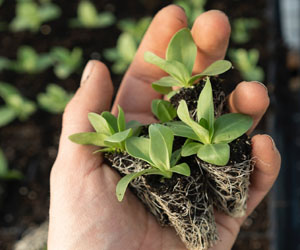 The Principle Of Wicking Systems
The Principle Of Wicking Systems
Wicking systems are a type of passive sub-irrigation method that relies on capillary action to transport water from a reservoir to the root zone of plants. The basic components of a wicking system include a water reservoir, a wicking medium (commonly soil or a soilless mix), and a growing container or bed with a wick that draws water up to the plant's roots.
The key principle behind wicking systems is the movement of water through porous materials, like soil or a specialized wicking fabric, from areas of high water concentration (the reservoir) to areas of lower water concentration (the root zone). This capillary action ensures a consistent and controlled water supply to the plants, making wicking systems highly efficient.
Advantages Of Wicking Systems
Water Efficiency: Wicking systems significantly reduce water wastage by providing moisture directly to the root zone. This targeted irrigation minimizes evaporation and runoff.
Reduced Labor: Once set up, wicking systems require minimal maintenance and are well-suited for urban gardens, container gardening, and raised beds, making them an excellent choice for those with limited time or space.
Improved Plant Health: Consistent moisture levels contribute to healthier and more robust plant growth. These systems help prevent overwatering, which can lead to root rot and other water-related plant diseases.
Drought Resilience: Wicking systems can conserve water and sustain plants during dry spells, making them a valuable tool in regions prone to drought.
Customizable Design: Wicking systems can be adapted to various scales, from small pots to large garden beds and even commercial agriculture, providing flexibility and adaptability to different needs.


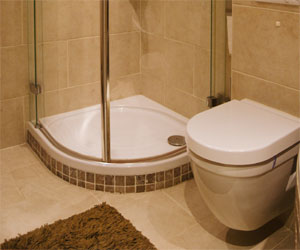
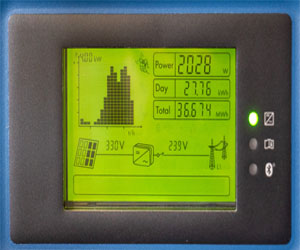

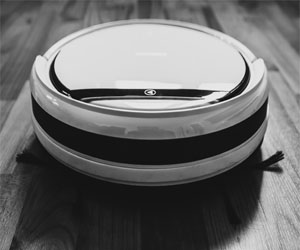
A Sustainable Solution For Water Scarcity
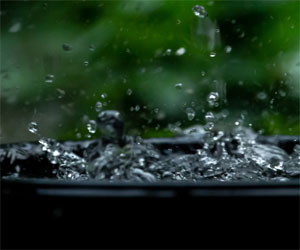 The Importance Of Rainwater Conservation
The Importance Of Rainwater Conservation
Water scarcity is a pressing global concern that affects millions of people, ecosystems, and industries. Many regions of the world are already experiencing the detrimental effects of water shortages, which can lead to droughts, crop failures, and even conflicts over dwindling water resources. Rainwater conservation addresses this issue by harnessing a natural resource that often goes underutilized.
The Collection Process
Rainwater conservation typically begins with the collection of rainwater from rooftops, pavements, or other surfaces. This water, known as runoff, is channeled through gutters and downspouts into storage tanks or cisterns. The collected rainwater can then be filtered and treated to make it suitable for various non-potable uses, such as watering gardens, flushing toilets, and washing vehicles. In some cases, rainwater can even be purified for drinking, further reducing the demand on municipal water supplies.
Environmental Benefits
One of the primary advantages of rainwater conservation is its positive impact on the environment. By capturing rainwater, we reduce the burden on natural water sources, such as rivers and lakes. This, in turn, helps protect aquatic ecosystems and maintains their biodiversity. Moreover, rainwater harvesting reduces soil erosion and minimizes the risk of flooding, as it diverts rainwater away from stormwater drainage systems.
Economic Benefits
Rainwater conservation also provides significant economic benefits. By using rainwater for non-potable purposes, homeowners and businesses can reduce their water bills, resulting in cost savings. In addition, governments and municipalities can save on infrastructure costs associated with water treatment and distribution.
Building A Sustainable Future
 The core principle of eco-friendly homes is to minimize the negative impact on the environment while maximizing the use of renewable and sustainable resources. Here are some key elements of eco-friendly homes:
The core principle of eco-friendly homes is to minimize the negative impact on the environment while maximizing the use of renewable and sustainable resources. Here are some key elements of eco-friendly homes:
Energy Efficiency: Eco-friendly homes are designed to be highly energy-efficient. They often feature better insulation, energy-efficient windows and doors, and advanced heating and cooling systems. These features reduce energy consumption and lower utility bills.
Renewable Energy: Many eco-friendly homes incorporate renewable energy sources such as solar panels and wind turbines. These technologies harness clean, sustainable energy from the sun and wind, reducing dependence on fossil fuels.
Water Conservation: Sustainable homes often feature water-saving appliances and fixtures. Rainwater harvesting and greywater recycling systems are also utilized to reduce water consumption, which is especially important in regions facing water scarcity.
Use Of Sustainable Materials: The construction of eco-friendly homes emphasizes the use of sustainable and recyclable building materials. This includes materials like bamboo, reclaimed wood, recycled glass, and low-VOC (volatile organic compound) paints to improve indoor air quality.
Passive Design: Passive design principles make use of natural elements like sunlight, wind, and shade to control the temperature and lighting within a home. This reduces the need for artificial heating, cooling, and lighting.
Green Roofs And Walls: Eco-friendly homes may incorporate green roofs and walls with vegetation that improves insulation, air quality, and aesthetics. Green spaces on rooftops and walls contribute to reduced urban heat islands and improved biodiversity.
Waste Reduction: These homes prioritize waste reduction through practices like on-site composting and recycling. Design elements can also allow for deconstruction and recycling of materials when the home reaches the end of its life cycle.